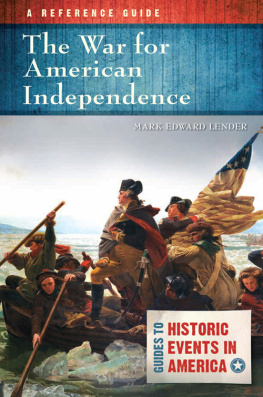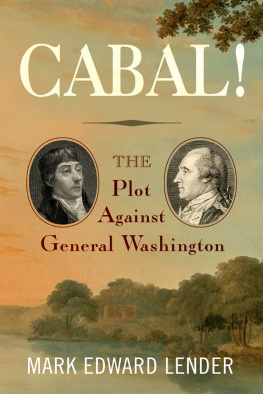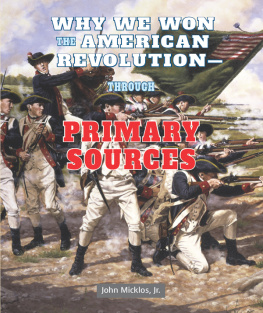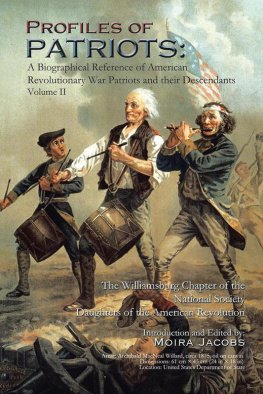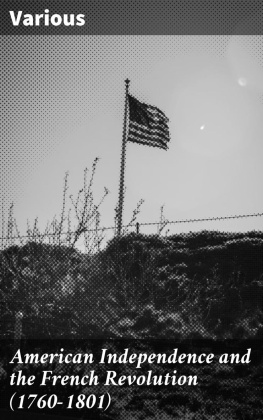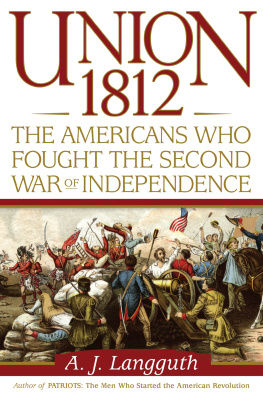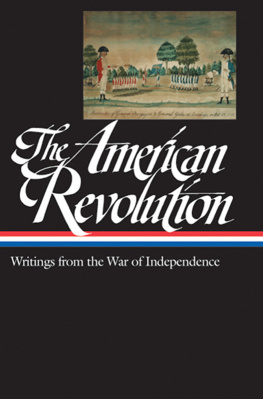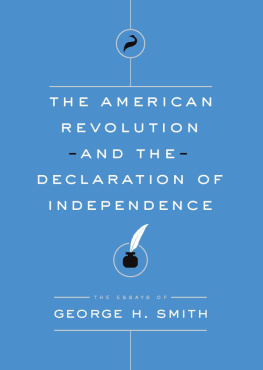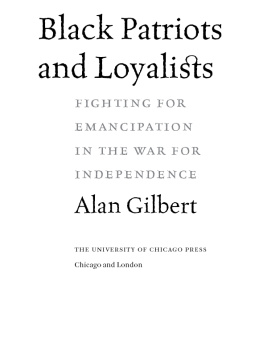T HE W AR FOR A MERICAN I NDEPENDENCE
Recent Titles in the Guides to Historical Events in America
Randall M. Miller, Series Editor
McCarthyism and the Red Scare: A Reference Guide
William T. Walker
The Underground Railroad: A Reference Guide
Kerry Walters
Lincoln, the Rise of the Republicans, and the Coming of the Civil War: A Reference Guide
Kerry Walters
America in the Cold War: A Reference Guide
William T. Walker
Andrew Jackson and the Rise of the Democrats: A Reference Guide
Mark R. Cheathem
The Progressive Era: A Reference Guide
Francis J. Sicius
Reconstruction: A Reference Guide
Paul E. Teed and Melissa Ladd Teed

Copyright 2016 by ABC-CLIO, LLC
All rights reserved. No part of this publication may be reproduced, stored in a retrieval system, or transmitted, in any form or by any means, electronic, mechanical, photocopying, recording, or otherwise, except for the inclusion of brief quotations in a review, without prior permission in writing from the publisher.
Library of Congress Cataloging-in-Publication Data
Names: Lender, Mark Edward, 1947author.
Title: The War for American Independence : a reference guide / Mark Edward Lender.
Description: Santa Barbara : ABC-CLIO, 2016. | Series: Guides to historic events in America | Includes bibliographical references and index.
Identifiers: LCCN 2016010124 | ISBN 9781610698337 (alk. paper) | ISBN 9781610698344 (ebook)
Subjects: LCSH: United StatesHistoryRevolution, 17751783.
Classification: LCC E208 .L54 2016 | DDC 973.3dc23
LC record available at http://lccn.loc.gov/2016010124
ISBN: 978-1-61069-833-7
EISBN: 978-1-61069-834-4
201918171612345
This book is also available as an eBook.
ABC-CLIO
An Imprint of ABC-CLIO, LLC
ABC-CLIO, LLC
130 Cremona Drive, P.O. Box 1911
Santa Barbara, California 93116-1911
www.abc-clio.com
This book is printed on acid-free paper 
Manufactured in the United States of America
Every reasonable effort has been made to trace the owners of copyrighted materials in this book, but in some instances this has proven impossible. The author and publisher will be glad to receive information leading to more complete acknowledgments in subsequent printings of the book and in the meantime extend their apologies for any omissions.
For my nephew
Eric Mains
Quaereres id quid legere.
Huic committitur.
Et scitis patruum Latine sciebant?
C ONTENTS
Chapter 1. Fortunes of War:
Patriot High Tide and Imperial Counterattack
L IST OF I LLUSTRATIONS
S ERIES F OREWORD
P erhaps no people have been more difficult to comprehend than the Americans. As J. Hector St. Jean de Crvecoeur asked during the American Revolution, countless others have echoed ever afterWhat then is this American, this new man? What, indeed? Americans then and after have been, and remain, a people in the process of becoming. They have been, and are, a people in motion, whether coming from a distant shore, crossing the mighty Mississippi, or packing off to the suburbs, and all the while following the promise of an American dream of realizing life, liberty, and happiness. The directions of such movement have changed, and sometimes the trajectory has taken a downward arc in terms of civil war and economic depression, but always the process has continued.
Making sense of that American experience demands attention to critical momentseventsthat reflected and affected American ideas and identities. Although Americans have constructed an almost linear narrative of progress from the days of George Washington to today in relating their common history, they also have marked that history by recognizing particular events as pivotal in explaining who and why they believed and acted as they did at particular times and over time. Such events have forced Americans to consider closely their true interests. They also have challenged their commitment to professed beliefs of freedom and liberty, equality and opportunity, tolerance and generosity. Whether fighting for independence or empire, drafting and implementing a frame of government, reconstructing a nation divided by civil war, struggling for basic rights and the franchise, creating a mass-mediated culture, standing up for capitalism and democracy and against communism, to name several critical developments, Americans have understood that historic events are more than just moments. They are processes of change made clear through particular events but not bound to a single moment or instance. Such thinking about the character and consequence of American history informs this new series of Guides to Historic Events in America.
Drawing on the latest and best literature, and bringing together narrative overviews and critical chapters of important historic events, the books in the series function as both reference guides and informed analyses of critical events that have shaped American life, culture, society, economy, and politics and fixed Americas place in the world. The books do not promise a comprehensive reading and rendering of American history. Such is not yet, if ever, possible for any single work or series. Nor do they chart a single interpretive line, though they share common concerns and methods of inquiry. Each book stands alone, resting on the expertise of the author and the strength of the evidence. At the same time, taken together the books in this new series will provide a dynamic portrait of that ongoing work in progress, America itself.
Each book follows a common format, with a chronology, historical overview, topical chapters on aspects of the historical event under examination, a set of biographies of key figures, selected essential primary documents, and an annotated bibliography. As such, each book holds many uses for students, teachers, and the general public wanting and needing to know the principal issues and the pertinent arguments and evidence on significant events in American history. The combination of historical description and analysis, biographies, and primary documents also moves readers to approach each critical event from multiple perspectives and with a critical eye. Each book in its structure and content invites students and teachers, in and out of the classroom, to consider and debate the character and consequence(s) of the historic event in question. Such debate invariably will bring readers back to that most critical and never-ending question of what was/is the American and what does, and must, America mean.
Randall M. Miller
Saint Josephs University, Philadelphia
P REFACE AND A CKNOWLEDGMENTS
A s the American colonies declared their independence from the British Empire, they already knew that declaring independence was one thing; securing it was another. Securing it meant fighting, and fighting meant a warthe War for American Independencewhich had been raging for more than a year before Congress announced the Declaration of Independence. This book is a new history of that war. It insists that the fighting mattered, and that military affairs and operations were central to the success of the Revolution itself. In fact, we cannot understand the Revolution in its political, social, economic, or other dimensions without an understanding of what, how, and why events transpired on the battlefield (and for that matter, on the rivers and high seas). Throughout the war American and British commanders were acutely aware that success in military operations was critical in maintaining popular support for their respective causes. In 1778 Lord Carlisle, on a forlorn mission of reconciliation with the rebellious Americans, put it best: While General Washingtons army appears able to keep the field and continue to awe the country, he wrote, there are no hopes that any of the provinces will declare in our favor. Carlisle was right, and both American and British generals planned accordingly.
Next page
